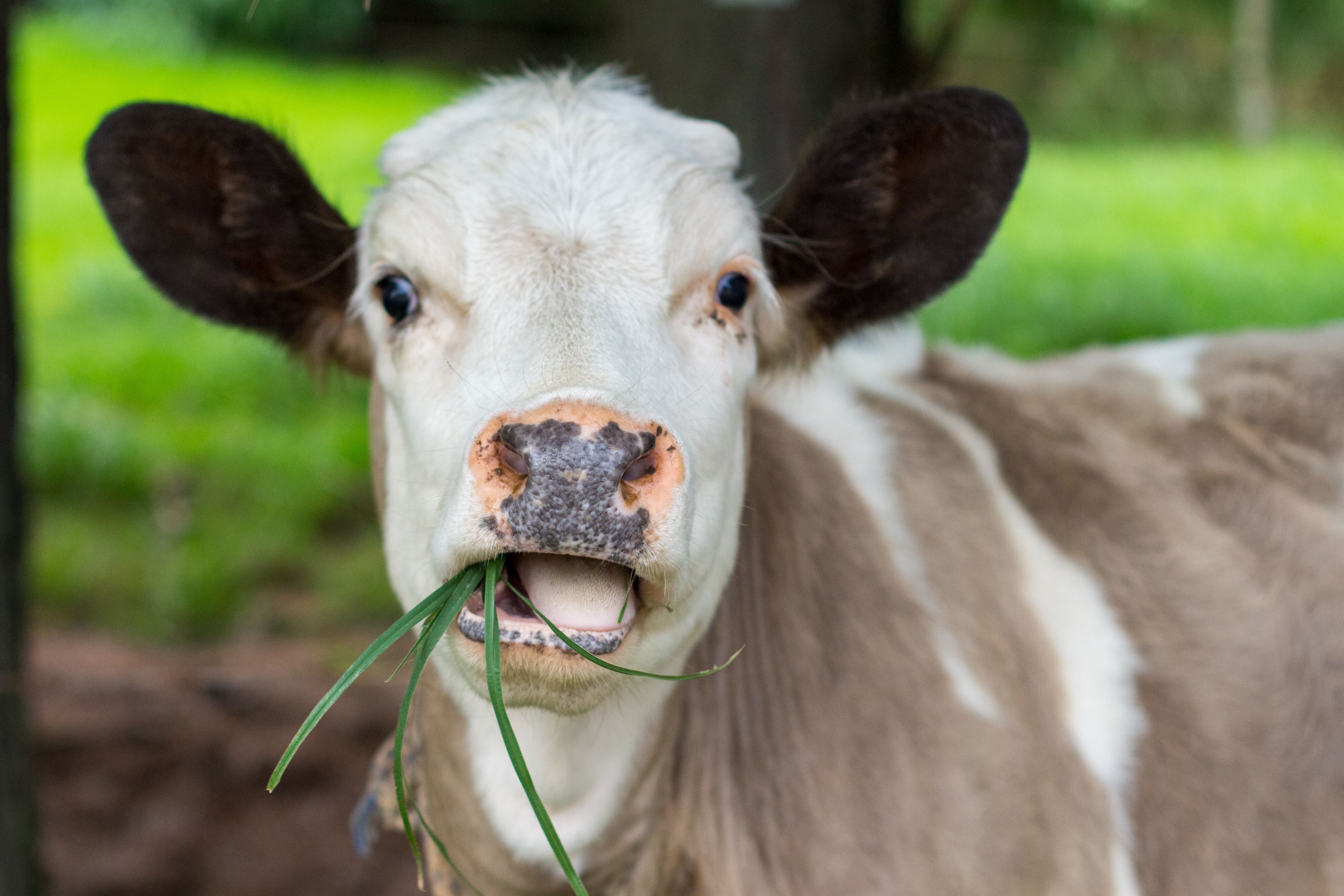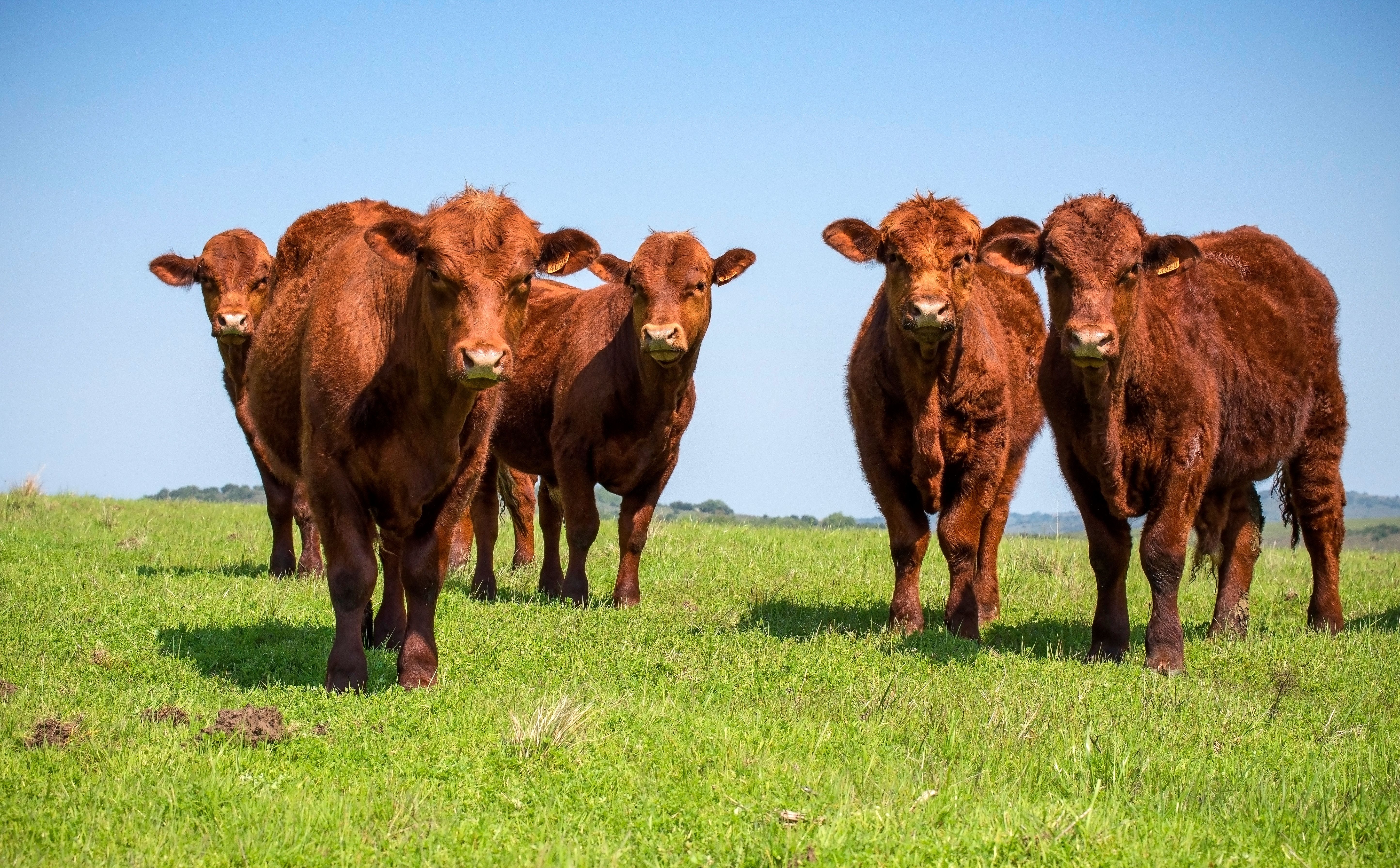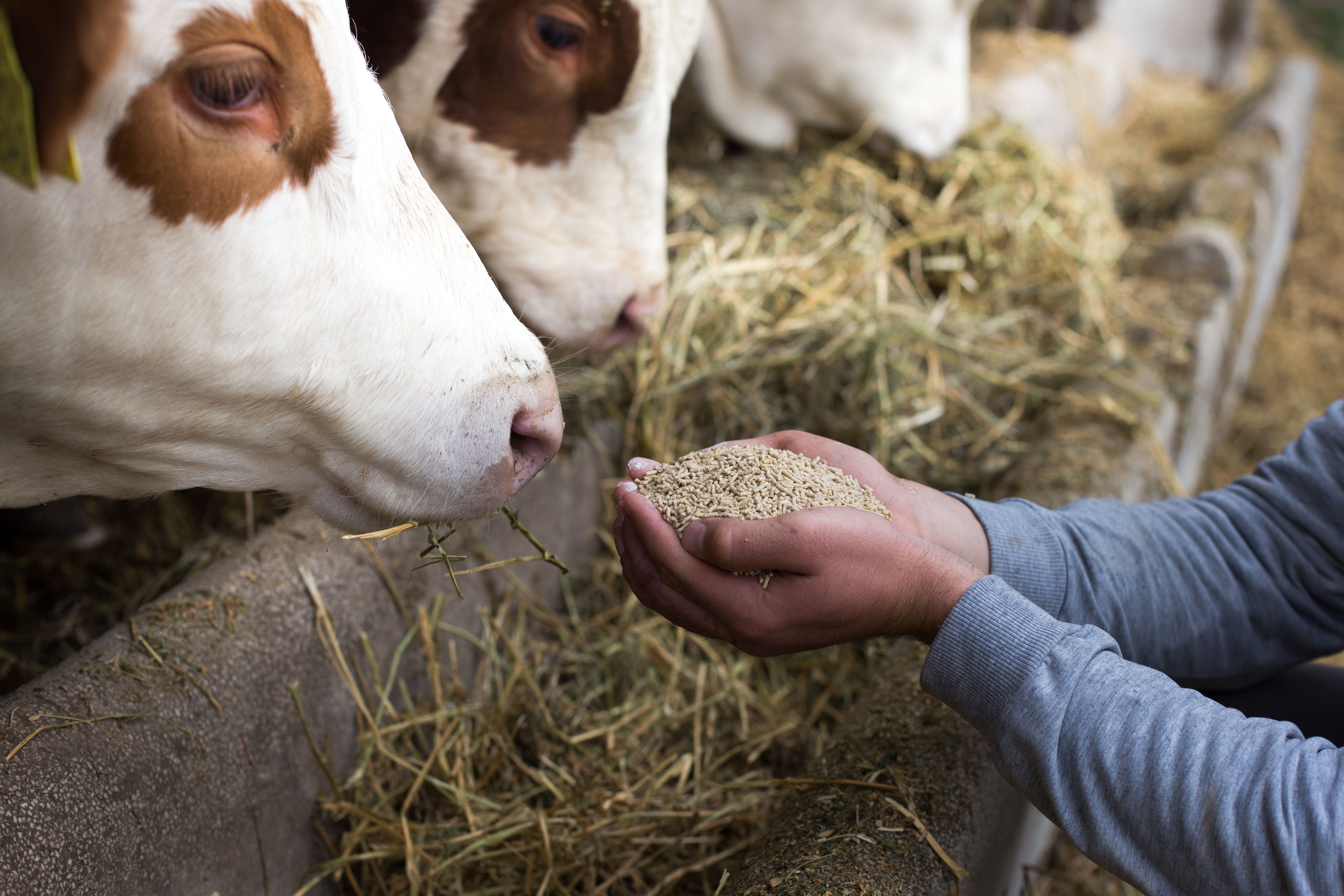What it is
Cattle are responsible for 65% of global methane emissions. Most of this methane is emitted when cattle burp as a result of a digestive process, called enteric fermentation, in which methane-generating microorganisms in their digestive tracts break down food. Changing cattle feed and adding additives to it can significantly reduce these emissions, as can adjustments in genetics.

Where it can be used
Cattle farms across South America.
How it works
Feed additives
Emissions from enteric fermentation can be reduced by including feed additives that inhibit the enzyme that leads to methane generation inside cattle. Potential feed additives include red algae, kelp and seaweed, corn, soybeans, canola seeds, and garlic, as well as supplements like Bovear, which is made by DSM, a health, nutrition, and bioscience company. The company reports the supplement reduces enteric methane emissions from cattle by 30-45%.
Nutrition
Foods with lower fiber, such as legumes, are easier for cattle to digest than many grasses and, consequently, lead to less methane generation. Legumes can be combined with cattle feed, such as maize and soy, so that cattle get better nutrition. Better quality feed is also easier for cows to digest, leading to lower methane emissions. Such a diet can improve cattles’ health and increase milk production, potentially increasing farmers’ incomes.
On the pasture
Most feed additives have been tested with cattle on feedlots. It is harder to give supplements to and control the diet of cattle on pasture. These cattle generally produce more methane than their feedlot counterparts. Pasture is often of low quality, which can lead to increased methane emissions. In these cases, improving the quality of the forage in terms of nutrition and digestibility can help reduce methane emissions. For example, switching from grass forages to legume forages can help.
Genetics
Breeding cows that use feed more efficiently and are healthier can reduce methane emissions. Other options for improving health include increasing veterinary services and proactive herd health planning.

Who’s doing it
Bovear has been approved for use in some South American countries, including Brazil, Chile, and Argentina. Additionally, companies and researchers in Brazil, Chile, Argentina, and Uruguay—often with government funding or collaboration—are testing and experimenting with various solutions. For example, in a study published in 2022, Uruguay‘s Ministry of Livestock, Agriculture, and Fisheries, found that combined soil restoration in pastures with other climate-smart practices reduce methane emissions by 16% per kilogram of meat.
Policy Considerations
Laws, policies, and regulations
National governments can adopt policies that require meat and dairy companies to publicly report on their methane emissions and put in place plans with concrete, science-based targets to reduce them. Currently, few companies report their emissions, which is a first step towards reducing them (a 2018 study found that just 18% of the top 20 global meat and dairy companies partially reported on methane emissions).
Also, when implementing measures to increase livestock productivity, governments should considered establishing as well a limit on total emissions. Solutions that increase productivity reduce the intensity of methane emissions (methane per kilogram of product); however, they also generate greater economic returns to the livestock producers, because they increase economic efficiency, and create an incentive to produce more and thus increase profits. This implies that implementing focused measures only in productivity could generate a rebound effect in total methane emissions.
Subsidies
Improving the quality of feed and purchasing feed additives may be out of reach for some farms, especially smaller ones. Subsidies to help farmers purchase feed, as well as undertake training on how to reduce methane emissions, can enable action.
Research and development
Reducing methane emissions associated with enteric fermentation is an emerging field. While solutions are available, companies, scientists, and farmers are actively exploring alternate approaches and implementing existing ones in diverse contexts. Many feed additives are relatively new and still being tested, or require support to scale. For example, red seaweed—which has reduced methane emissions in cattle by up to 98%—is challenging to produce on a global scale. Drawing on wild red seaweed is not sustainable and widespread farming of red seaweed has yet to emerge.
Governments can work with local farmers and meat and dairy companies by funding research and development that is aligned with their methane-reduction goals. Additionally, governments can play a role in sharing insights from other countries with local farmers.
Technical guidance
Governments can play a critical role in enabling farmers to reduce methane emissions by providing detailed technical guidance. Technical guidance can be supplemented with educational programming and training to help farmers.
